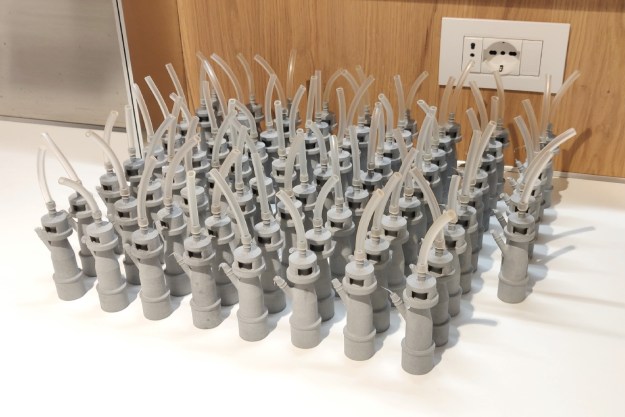 Proof, perhaps, that 3D technology has officially crossed over into the mainstream – or, if you’re of a cynical mind, that it is a fad in its dying days searching for some novelty and attention while it still can – comes in the form of the news that even Queen Elizabeth II, the Queen of the United Kingdom, has adopted the format for her latest Christmas broadcast to the nation.
Proof, perhaps, that 3D technology has officially crossed over into the mainstream – or, if you’re of a cynical mind, that it is a fad in its dying days searching for some novelty and attention while it still can – comes in the form of the news that even Queen Elizabeth II, the Queen of the United Kingdom, has adopted the format for her latest Christmas broadcast to the nation.
The annual broadcast – officially titled “The annual Christmas broadcast to the UK and the Commonwealth” – has been a staple of the royal calendar since 1932, when Elizabeth II’s grandfather, King George V, took the advice of Sir John Reith, the founder of the BBC, to communicate with his subjects via radio. The Queen’s first broadcast came in 1952, and it was under her reign that the broadcast transferred to television in 1957, where it has remained ever since with only one exception (A mooted broadcast in 1969 was decided against, because a documentary about the Royal Family was already scheduled for the traditional 3 p.m. timeslot). The annual broadcast is written by the Queen herself, and is unusual in that it’s one of the few occasions on which she doesn’t seek advice from the government on what to say during a public address.
This year’s message, produced by Sky News, will be available in multiple formats in addition to the 3D version; Sky will show the 3D version, while BBC News will broadcast a High Definition version, with an SD version going out on other channels. “We wanted to do something a bit different and special in this jubilee year, so doing it for the first time in 3D seemed a good thing, technology-wise, to do,” a spokesman for Buckingham Palace said. “The Queen absolutely agreed straight away. There was no need for convincing at all; she was absolutely ready to embrace something new in this year.”
This is hardly the first time that Her Majesty has played around with new technology when it comes to the annual broadcast. In 2006, she released a podcast and, since 2007, the broadcast has been available on YouTube for the traditional 12 Days of Christmas (Christmas Day through January 5). A transcript of last year’s broadcast was not only posted on Facebook but also made available as a downloadable e-book. Clearly, Her Majesty likes to keep up with current trends; it can only be a matter of time before she just tweets her thoughts instead of sitting down to record them for the camera.
According to the Palace spokesman, the Queen has already watched the finished message in 3D, and deemed it “absolutely lovely.” If only the broadcast included the sight of the Queen wearing special 3D glasses, I’m sure that everyone would find themselves tuning in.
Editors' Recommendations
- 3DMakerpro’s Seal is a pocket-sized scanner to make next-gen precision 3D prints
- Need a last-minute Halloween costume? Check out these 3D-printable getups
- The future of making stuff: Inside the evolution of 3D printing with Formlabs
- Father’s Day Gift Idea: These cheap 3D printers are on sale for less than $300
- The 50-year old Silicon Valley lab that practically invented modern computing


